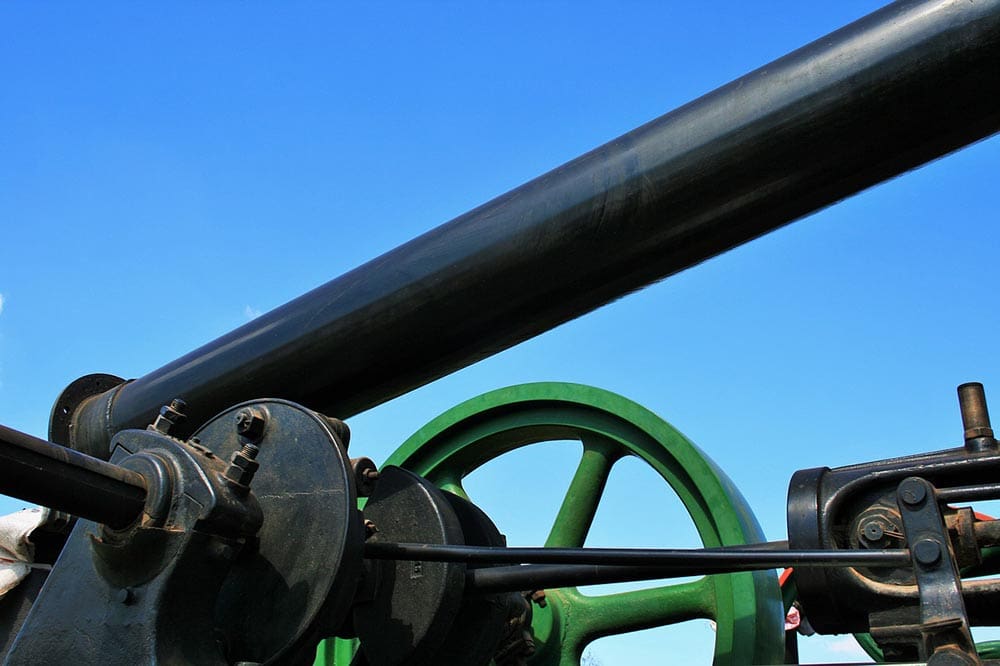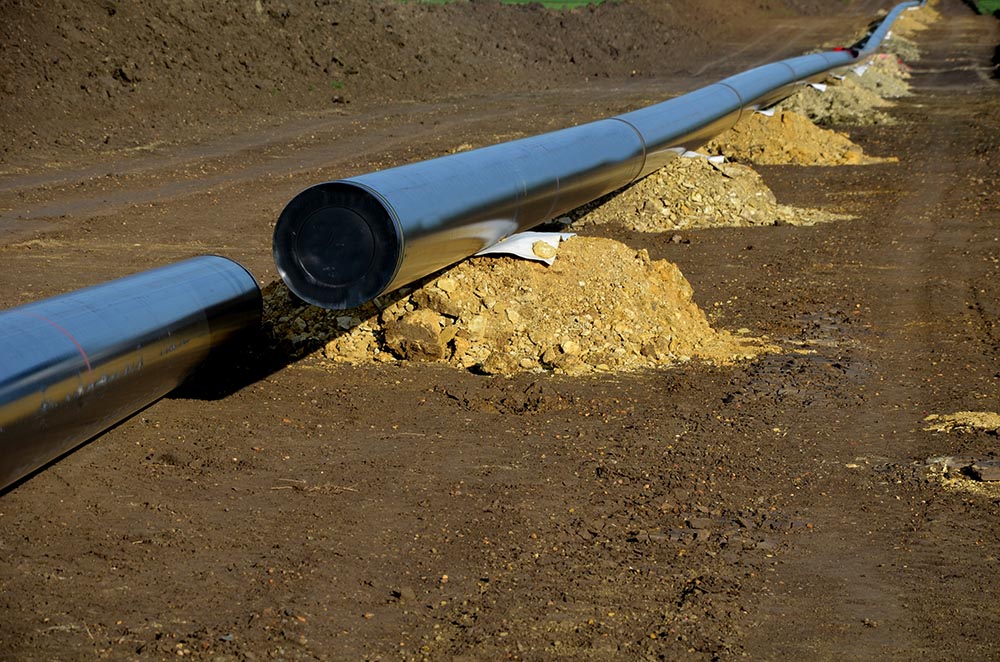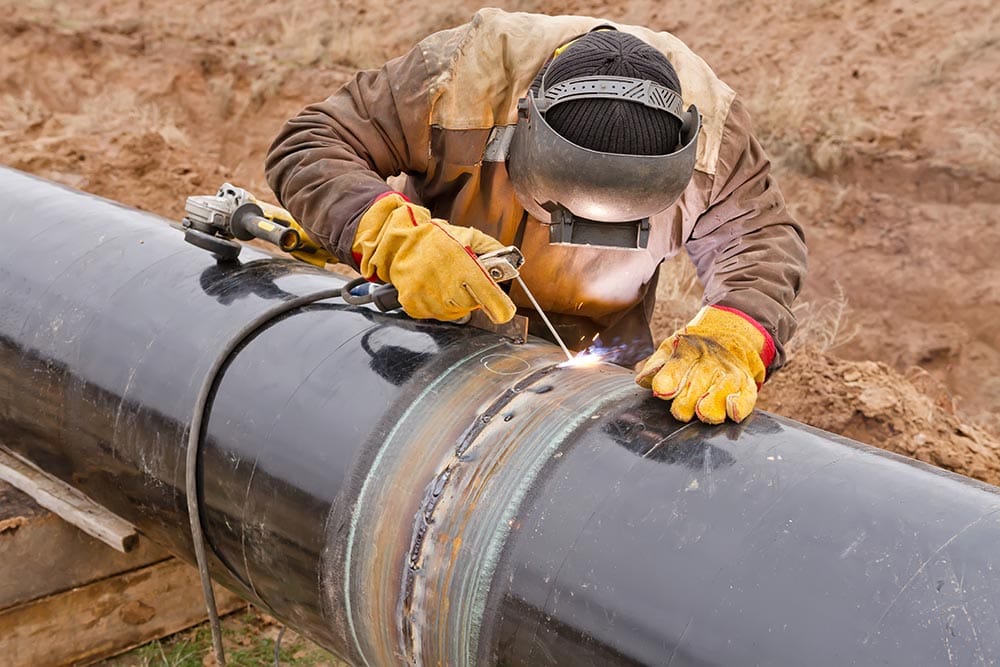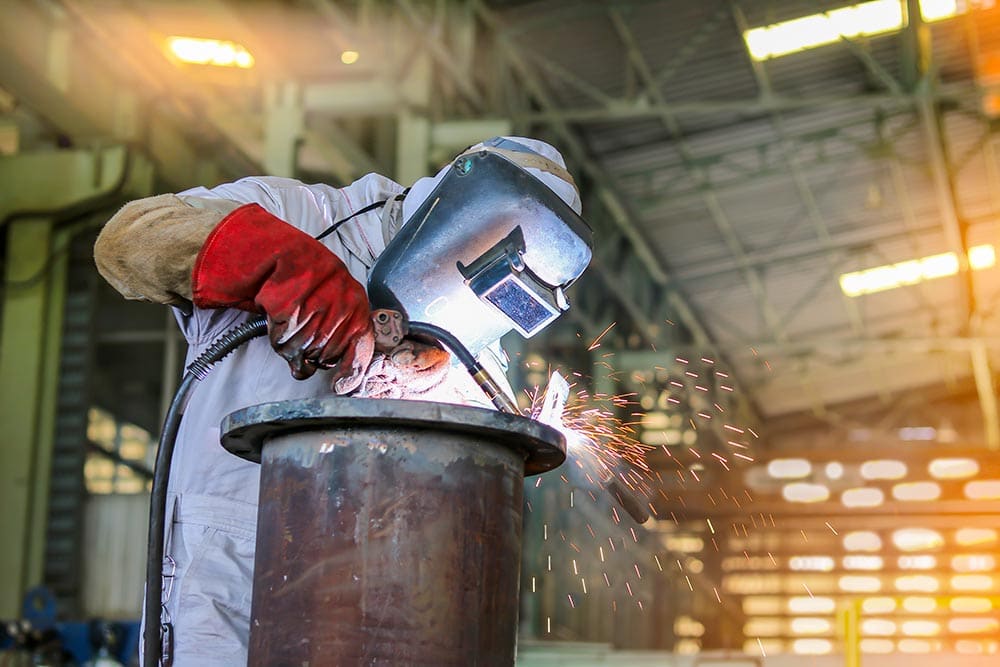Can You Weld Black Pipe? All You Need to Know!
Last Updated on

Black iron pipe has been a go-to metal for a long time due to its strength, durability, and unique look. However, as with most metals, understanding which can and cannot be welded and how to go about it can be daunting. Most people ask whether black pipe can be welded, and the answer is yes. You can weld black pipe.
Black pipe does not have a zinc galvanization, which means you can weld it without creating any zinc oxide, a toxin that can negatively impact human health. It has an iron oxide coating which is safe even when inhaled during welding. Different welders may prefer different approaches as to how they go about welding the metal, but arc welding is by far the best option for the job.
In this article, we will dive deeply into black pipe and how to weld it, coupled with the best advice on how to do the job. Let’s take a look!
What is Black Pipe?
The name “black pipe” is meant to help in differentiating plain mild steel pipe and galvanized pipe. Galvanized pipes refer to metals that have been dipped in a zinc coating to help prevent corrosion and rust.
Black pipe is an un-galvanized steel pipe, also referred to as black iron pipe, industrial pipe, or black steel pipe. Since the material is made from mild steel, black pipe is easily weldable. However, due to the name black iron pipe, people tend to think it is hard to weld, as they confuse it with iron.

What are Black Pipes Used For?
Black pipes hold a lot of strength compared to copper aluminum and its PVC counterparts. It also comes with added length and strength, making it a favorite for several uses. Before we get into how it’s welded, let’s look at some of its fundamental uses.
Gas Transport
One of the primary areas black pipes are used is in gas transport. Gas is a sensitive subject, and any mishap while handling it can have disastrous effects. This is where black iron comes in, especially in transporting both propane and natural gas.
Black pipes stand out here because it is manufactured without a seam, making it stronger and safer for the job.
Decorative Pieces
Black pipes have become a popular material for creating interesting pieces. They are both strong and visually impressive, which makes them a favorite for many people.
It is worth noting that black pipes are not black naturally, as they are made from steel that has not been coated with substrate. The dark color comes from iron oxide on the surface and is the star of the show when it comes to aesthetic beauty.
They are used, among others, as lamps, shoe racks, cabinet hardware, carts, bathroom utilities and more.
Water Transport
Black pipes are also a common material in water transport in water wells and sewage stations. According to experts, black pipes were first used in agriculture to deliver water from rivers to farms before being used to transport gas.
Safety and Recreation Purposes
Black pipes are also common in sprinkler systems as their features make them perfect for safety usage. Here are some reasons why:
- No impact in terms of mechanical performance, especially when exposed to UV rays
- Fire resistant and can withstand high levels of heat
- Easy to install
- Readily available
- Cost effective

Welding Black Pipe-Methodologies
As we have already seen, it is possible to weld black pipes, but how do you go about it? You have a couple of options, including common methods such as arc welding, MIG welding, flux core welding, and TIG welding.
1. Arc Welding Black Pipes
This is the process of welding through high-pressure gas or electricity, where you create heat to melt and join different metals. A power supply creates the electric arc between a consumable and a non-consumable electrode and base material.
2. MIG Welding
This uses inert metal gas to do what arc welding does, where you melt and connect two metals with the help of a solid electrode. The heat is fed to the metal through a welding gun.
3. Flux Core Welding
This is where you weld a black pipe with the help of a tubular wire that is filled with flux. This works such that an arc is initiated between the continuous electrode and work piece. The flux found within the tubular electrode’s core melts during welding, shielding the weld pool from the atmosphere.
Here a direct current is usually employed, similar to the FCAW process.
4. TIG Welding
This is where you weld the black pipes using a non-consumable tungsten electrode. An arc is formed between a pointed tungsten electrode and a workpiece with the help of an inert atmosphere of helium.

The 6 Step Process of Welding Black Pipe
As a main rule of thumb, always apply some good preparation and cleaning procedures, which will help in reducing smoke and fumes while at the same time making a better weld. Also, remove the black oxide layer with a wire brush or grinder to increase the brightness of the metal.
- After cleaning the black pipe and the metal you want to join, clamp them together as tightly as possible.
- Depending on the welding methodology you use, prepare the equipment for the job, and put on the proper safety gear.
- Test your welding gun on the area you want to work on, which is the seam between the two metals.
- Melt the two seams to create a bond between the two metals before you start working on the whole seam.
- Use the welding gun to travel down the seam of the metals you are working on, turning when needed to create a bead between the two metals.
- After they are cool enough to touch, clean them with a brush and remove any debris that may have been left lingering.
Welding Black Pipe Fittings
Some black pipe fitting may be difficult to weld. This is due to the fittings being made from malleable iron. When heated at over 1,700°F, malleable iron will transform and return to cast iron which will fracture easily.
An alternative to working with this is socket weld; these are fittings made from forged steel. They are a bit sturdier and can be welded without fear of embrittling. This is done by welding a steel pipe to a steel fitting. The steel fittings are also readily available.

Risks Associated with Welding Black Pipes
Similar to different welding materials, welding black pipes also comes with several risks that may be detrimental to the welder. Although there is no zinc in the coating, which reduces any chances of toxic fumes, there are still chances of welding accidents.
Let’s look at some of the dangers of welding black pipes.
Injuries
One of the biggest risks is bodily injury. Due to exposure to high-pressure gasses, heat, and extreme light, without proper gear one can get exposure to injuries, including welders flash, cataracts, and potential blindness.
Welders also risk getting burnt by hot metals while operating them.
Fumes
Although black iron does not have a lot of toxic fumes similar to galvanized pipes, there are still several fumes that may affect your health. Always work with ventilation equipment where you can breathe freely. Also, if you are working close to another welder, ensure you are not exposed to any fumes from the materials they are working with.
Shock
Shock is another common problem associated with welding. This may be caused by the equipment in use, faulty electricity, and dirty conditions, which may increase the chances of an accident.

Frequently Asked Questions
What is the Coating on Black Pipe?
Due to being un-galvanized, during manufacture, the factory will coat black with a layer of iron oxide, which is safe for humans during welding. It also gives the metal an ebony color.
Apart from iron oxide, the metal can also be coated with several other things, including tar, enamel, lacquer, or oil.
Can You Weld Black Pipe to Steel?
Black pipe is low carbon steel, which means it can also be welded to most grades of steel.
You will have to consider a couple of factors if you decide to weld it to steel, including metallurgical needs, heat treatment, zone cracking, and galvanic corrosion issues.
Final Thoughts
Black iron pipes come with a lot of stuff or impurities on the top, which makes their preparation for welding a huge part of ensuring you get a perfect finish. It is a low-carbon metal which will give you an easy time to work with and many options as to the number of metals you can combine it with.
After getting properly suited and booted, get into it and try your hands at welding black pipes, and enjoy the beautiful results.
You may also be interested in: Can You Weld Cast Iron to Steel? The Surprising Answer!
Featured Image Credit: Bluesnap, Pixabay
